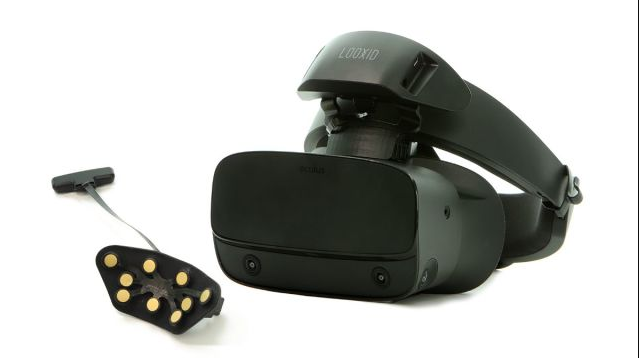Looxid Link Brain Interface Comes to Oculus Rift S
Looxid Labs’ brain monitor was first unveiled two years ago. The display was pinned on the corner of the user’s field of vision and the device would then have real-time stats on the user’s brain activity. When it was first unveiled, the functionality of the device seemed a little off. Over the years, the brain interface has improved considerably and now has some serious applications beyond just virtual reality gaming. Use-cases extend to both health and business sectors.

Looxid Labs has now revealed that its Looxid Link brain monitor for HTC Vive has now been adapted for Oculus Rift S via a modified slick EEG-equipped attachment as an add-on.
The add-on will be attached just above the Oculus Rift S goggles. This enables its nine EEG electrodes to come into contact with the user’s forehead. The design seems like a natural fit. A video of the attachment shows the wearer dodging enemy fire in a virtual reality game without the brain monitoring interface wobbling.
The Oculus Rift S version displayed in the video seems to have some simple modifications from the current HTC Vive edition of the Looxid Link to ensure it fits nicely to the shape of the headsets. The Vive versions of the Looxid Link brain interface cost $300. Looxid has yet to provide the pricing and release date for the unit. The company has promised to reveal additional details in the coming weeks.
How Looxid Link Works
The Link brain interface has nine electrodes that rest on the forehead of the virtual reality headset wearer. They measure the brain signals from the forehead and transmit these to Looxid’s PC software. These can, for example, give hints on the relaxed status of the headset wearer.
Looxid has stated that the brain interface can be particularly useful to doctors and market researchers that want to measure the brain currents for therapy or within the context of certain experiences. Looxid has also presented virtual reality demo games where the VR headset wearer could trigger simple interactions by using a brain signal.
How it is adapted for Oculus Rift S
To adapt the device for Oculus Rift S, the Link measuring device is clamped between the facial foam and the forehead attachment. It does not require major modifications to work with the Oculus Rift S.
Looxid Labs is also offering developers integration with Unity. During the CES 2018, the Looxid VR device was awarded a prize for the best innovation. Apart from the brain flow measurements, Looxid’s own virtual reality headsets also have an eye-tracking system that tracks the movements of the pupil.
Uses
At a first glance, Looxid Link appears like a VR gaming accessory. In fact, it can be used in modifying a game based on the emotions of the player. However, Looxid Labs hopes that businesses and healthcare providers can also leverage the brain-sensing technology. For example, an auto manufacturer can leverage the Looxid Link by having a focus group wear it in order to have a more objective reaction to a product.
The VR add-on can also be used by therapists to have a less stressful exposure therapy while also getting a better understanding of the patient’s reactions. It will take time before these ideas can percolate to these use-cases but by integrating the product into a number of virtual reality headsets, Looxid Labs is paving the way for researchers and developers to begin using the device in creating new applications.
https://virtualrealitytimes.com/2020/03/14/looxid-link-brain-interface-comes-to-oculus-rift-s/https://virtualrealitytimes.com/wp-content/uploads/2020/03/Looxid-Labs-600x336.pnghttps://virtualrealitytimes.com/wp-content/uploads/2020/03/Looxid-Labs-150x90.pngTechnologyLooxid Labs’ brain monitor was first unveiled two years ago. The display was pinned on the corner of the user’s field of vision and the device would then have real-time stats on the user’s brain activity. When it was first unveiled, the functionality of the device seemed a little...Sam OchanjiSam Ochanji[email protected]EditorVirtual Reality Times - Metaverse & VR
